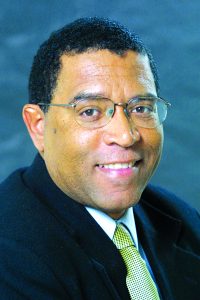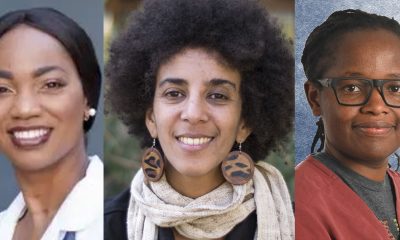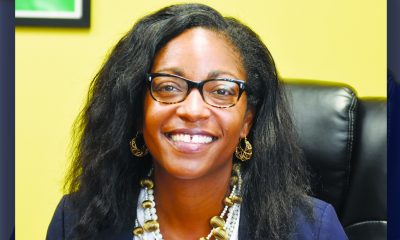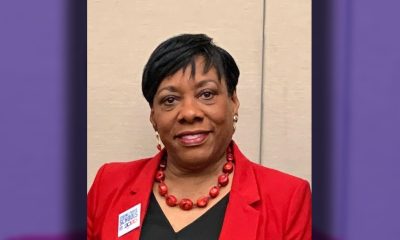Education
School Board Focuses on Balanced Budget After This Year’s $17 Million Shortfall
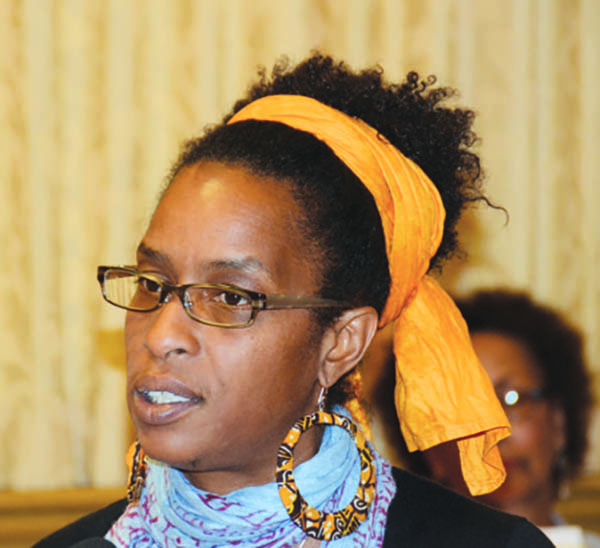
District 3 Boardmember Jumoke Hinton Hodge
Oakland Board of Education members are gaining a deeper understanding of operating public schools in tough times as they work with new superintendent Kyla Johnson-Trammell to maintain a balanced budget after former Superintendent Antwan Wilson left the district with a two-year $32 million shortfall, including $17 million this year.
In interviews with the Oakland Post, several board members discussed what went wrong under Wilson and the prospects for the school district in the next year or two.
Board President James Harris, who represents District 7, said that though the budget is fragile, “Right now nothing indicates we are going to run out of money.”
“If we put the changes in place, I believe we will see our way through,” he said, “We don’t believe there will be (new) money from the state.”

James Harris
He said the “encroachment” of special education on the district’s general fund has grown by $5 million a year, “though services have not gotten better. In some cases, they have gotten worse.”
“We are going to make cuts or change the kind of services we offer in special education,” Harris said.
Harris says the district has to close schools.
“We need to make some reductions in our portfolio,” he said. “I think we’re going to have to downsize.
“There is no wiggle room for anything else. I think the board is willing to do that.”
District 3 Boardmember Jumoke Hinton Hodge pointed to school sites and principals who overspent their budgets last year and disputed those who pinned the blame for the district’s shortfall on former Supt. Wilson.
While Wilson did not talk about a deficit and budget cuts before he left, she said, “We knew we had to make cuts. We talked about it in terms in realigning (spending) priorities.”
She said board members who fault Wilson for hiring too many central office administrators are “kind of disingenuous. We (board members) approved this.”
Hinton Hodge disagreed with budget staff members who recently reported to the Budget and Finance Committee that Wilson’s administration had hired 75 employees, mostly in the central office, who were not in the budget.
“I know the narrative is about the attempt to hire 75 people without a budget,” she said. “That is not true. I don’t know who made that up. There was a redesigning of job descriptions. There were new (job) positions, adjustments of assignments, but there were not necessarily new people.”
She said a number of district schools, like MetWest and Coliseum College Prep Academy (CCPA), are too small and need to expand. “How can they serve an additional 100 students?” she asked. “I’d like to increase their numbers so they can be self-sufficient.”
District 5 Boardmember Shanthi Gonzales said staff did not inform the board until a few weeks ago about the 75 employees who were hired last year but were not in the budget.
“What’s disheartening is that staff knew this was going on, and nobody alerted the board,” she said.
“Some of the 75 positons were brand new people,” she said. “Some people already worked within the district but were put in new roles. In most cases, their salaries went up,” but their old positions were in the budget and remained unfilled.
In addition, she said, the district’s $30 million budget shortfall was never presented to the board last year.
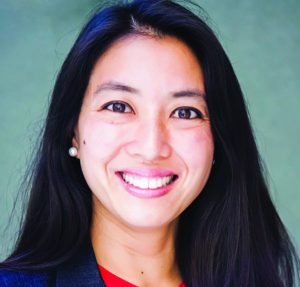
Aimee Eng
“They tried to make it less serious than it really was,” Gonzales said. “Staff were getting pressured not to be honest (to the board) about what the extent of the crisis was.”
“(Now), everyone (on the board) is committed to staying out of receivership. It’s not good for the community to lose democratic control of our schools.”
Aimee Eng, representing District 5, chairs the board’s Budget and Finance committee. She said she is basically optimistic about the district’s prospects.
“I am feeling good (about the superintendent). Her first priority is fiscal vitality. She not only listens, she understands the district. She is open and collaborative,” said Eng.
She said she does not want to rush into making the decision to close schools.
“Closures is one of several options. I myself have been pretty cautious about (deciding) to close schools. If you look at just the numbers (of schools and students), you are not necessarily looking at the local context.If you look at the local context, you know that it is just not that simple,” she said. “There is a lot of pressure to act really quickly, but there are a lot of questions that really need to be answered.”
Activism
Teachers’ Union Thanks Supt. Johnson-Trammell for Service to Schools and Community
“I speak for our Oakland community and the families OEA serves in thanking Supt. Johnson-Trammell for her service. With public schools and immigrant families under attack nationally from Trump and with budget challenges affecting many California school districts, these are tough times demanding the best of what we all have to offer,” said OEA President Kampala Taiz-Rancifer in a statement released Thursday.

The union calls for a community-involvement in search for new superintendent
By Post Staff
While pointing out that Supt. Kayla Johnson-Trammell has been planning to resign for a while, the Oakland Education Association (OEA) thanked her for years of service to the schools and called for community involvement in the search for a new superintendent.
“I speak for our Oakland community and the families OEA serves in thanking Supt. Johnson-Trammell for her service. With public schools and immigrant families under attack nationally from Trump and with budget challenges affecting many California school districts, these are tough times demanding the best of what we all have to offer,” said OEA President Kampala Taiz-Rancifer in a statement released Thursday.
“While we disagreed strongly on a number of issues,” said Taiz-Rancifer, “Dr. Johnson-Trammell is a daughter of Oakland and a product of our public schools. We thank her for her service and wish her the best moving forward.”
She said the schools’ community was aware that the superintendent had been planning to leave well before this week’s announcement.
“The superintendent has spoken publicly throughout the year about her planned departure. In August 2024, the previous school board approved a renewed contract raising her compensation to over $600,000 per year and allowing her to step back from daily responsibilities beginning in the 2025-2026 school year,” said Taiz-Rancifer.
She said the teachers’ union has been raising concerns about the need for stability and financial transparency in the district. “For three of the last four years, the district projected major deficits, only to end with millions in reserve.” This year, she said, the district added $90 million to central office overhead expenses.
“Just last month, a majority of school board directors took action to cap expensive consultant costs and develop alternative budget proposals that align spending with community priorities to keep funding in classrooms,” she said.
Taiz-Rancifer said the union stands behind the leadership of Board President Jennifer Brouhard and Boardmembers Valarie Bachelor, Rachel Latta, and VanCedric Williams.
Alameda County
OUSD Supt. Chief Kyla Johnson-Trammell to Step Down on July 1
The district’s progress under Johnson-Trammell’s leadership “provides a strong foundation for the transition and work ahead,” according to the joint statement. “The plan has always prioritized a smooth and thoughtful transition. A formal search for a permanent superintendent was (originally) scheduled to begin in fall 2025,” but now the board is “initiating this process focusing on transparency and deep community involvement.”
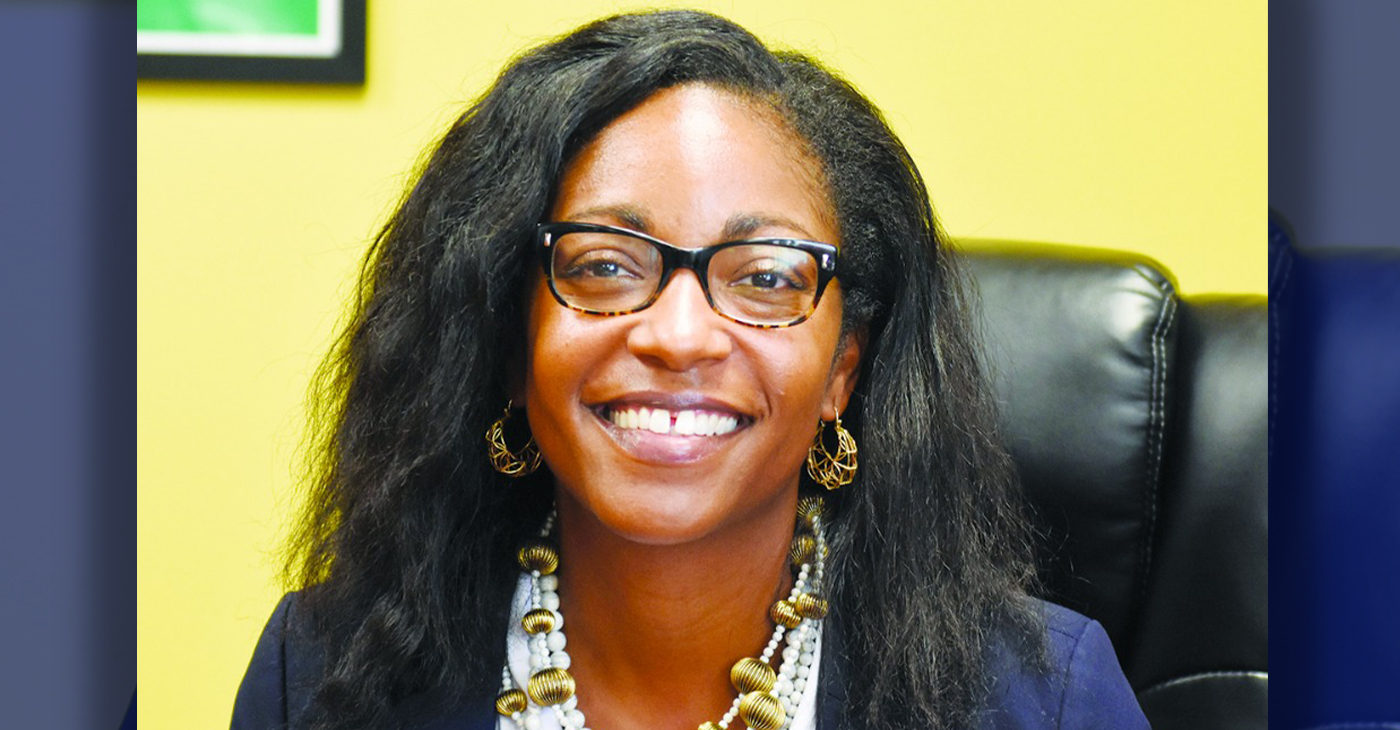
By Post Staff
The Oakland Unified School District announced this week that Supt. Kyla Johnson-Trammell will leave her position on July 1 after serving for eight years.
In closed session on Wednesday evening, the school board approved a voluntary separation agreement by a 4-3 vote, said Board President Jennifer Brouhard.
The board will begin searching immediately for an interim superintendent who will start on July 1. Johnson-Trammell will continue as superintendent emeritus from July 1 to Jan. 15, 2026, to help with the transition, according to a joint statement released by Johnson-Trammell and the Board.
In a personal statement to the community, Johnson-Trammell said:
“As I prepare to step away from my role as your superintendent on June 30, I do so with immense pride in what we’ve accomplished together. The last eight years have brought some of the most challenging — and most defining — moments in our district’s history. Through it all, Oakland has shown what’s possible when we stay grounded in our mission and vision and work in partnership for our students.”
The joint statement from Johnson-Trammell and the Board modifies her existing contract. According to the joint statement: “in August 2024, the OUSD Board of Education approved a three-year transitional contract for Superintendent Johnson-Trammell, with the next school year (2025-2026) allowing for a shift in responsibilities to support the transition to a permanent superintendent at the start of the 2026-2027 school year.”
Praising Johnson-Trammell’s accomplishments, the joint statement said, “(She) has done an extraordinary job over the past eight years, a historic tenure marked by stability, strong fiscal oversight, and improvements in student achievement.”
According to the statement, her achievements include:
- increased graduation rates
- improved literacy
- increased student attendance rates,
- “exemplary” COVID pandemic leadership,
- “historic” pay raises to educators,
- Improvement in OUSD’s facilities bond program,
- ensuring strong fiscal systems and budgeting
The district’s progress under Johnson-Trammell’s leadership “provides a strong foundation for the transition and work ahead,” according to the joint statement. “The plan has always prioritized a smooth and thoughtful transition. A formal search for a permanent superintendent was (originally) scheduled to begin in fall 2025,” but now the board is “initiating this process focusing on transparency and deep community involvement.”
As Johnson-Trammell’s years of service are coming to an end, there remain significant unresolved challenges facing the district, including a $95 million budget deficit and the threat of school closings and employee layoffs, as well as contract negotiations with the Oakland Education Association (OEA), the teachers’ union.
Another ongoing controversy has been the superintendent’s extremely high salary, which was negotiated less than a year ago under the leadership of Boardmember Mike Hutchinson and former Boardmember Sam Davis.
Johnson-Trammell is one of the highest-paid superintendents in California and the country, earning a total compensation package of $637,036.42 a year.
The contract had granted her a pay raise and a final three-year contract extension through the 2027 school year.
Under that contract, she would only continue as superintendent during the current school year, and then for two additional years she would work on research projects and prepare the district for a new superintendent, at the same rate of pay she now earns, plus raises.
During those two years, a temporary superintendent would be hired to handle the responsibilities of running the school district.
Bay Area
Five Years After COVID-19 Began, a Struggling Child Care Workforce Faces New Threats
Five years ago, as COVID-19 lockdowns and school closures began, most early educators continued to work in person, risking their own health and that of their families. “Early educators were called essential, but they weren’t provided with the personal protective equipment they needed to stay safe,” said CSCCE Executive Director Lea Austin. “There were no special shopping hours or ways for them to access safety materials in those early and scary months of the pandemic, leaving them to compete with other shoppers. One state even advised them to wear trash bags if they couldn’t find PPE.”
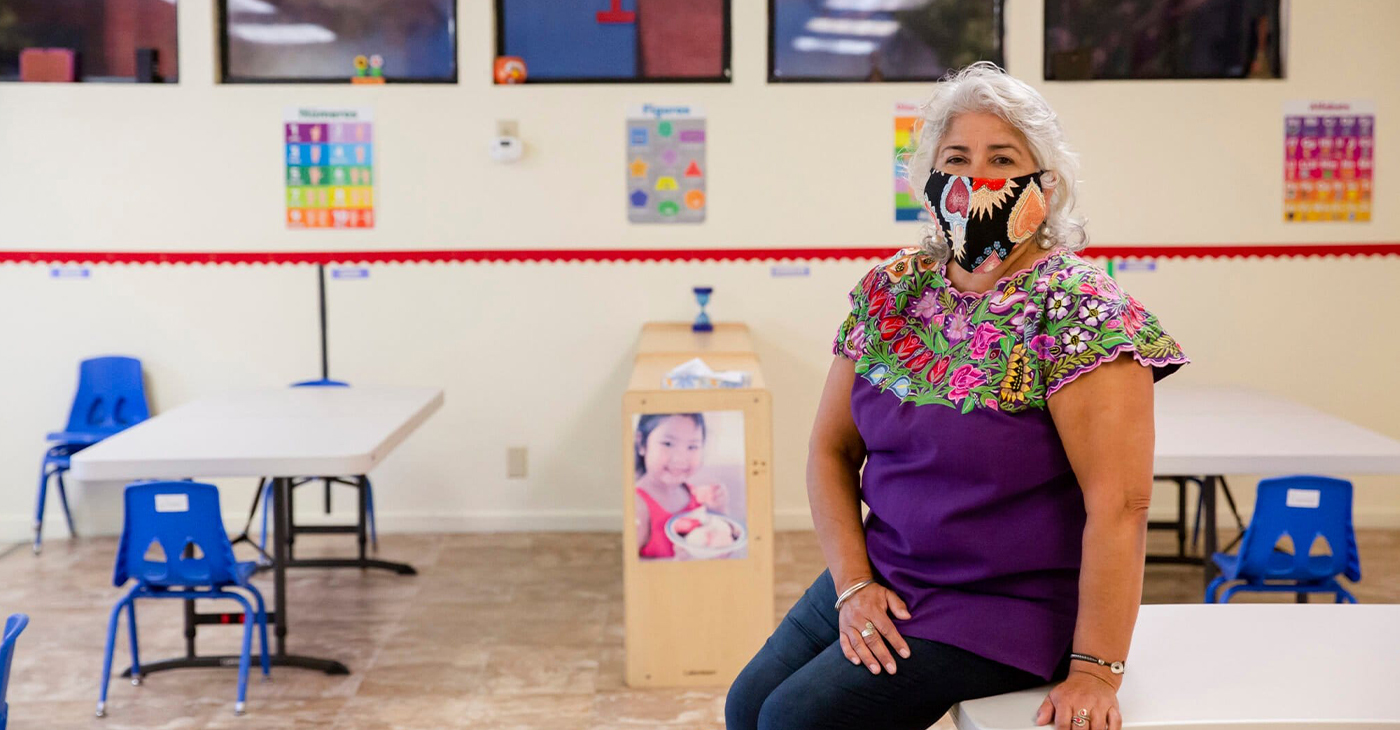
UC Berkeley News
In the first eight months of the COVID-19 pandemic alone, 166,000 childcare jobs were lost across the nation. Significant recovery didn’t begin until the advent of American Rescue Plan Act (ARPA) Child Care Stabilization funds in April 2021.
Today, child care employment is back to slightly above pre-pandemic levels, but job growth has remained sluggish at 1.4% since ARPA funding allocations ended in October 2023, according to analysis by the Center for the Study of Child Care Employment (CSCCE) at UC Berkeley. In the last six months, childcare employment has hovered around 1.1 million.
Yet more than two million American parents report job changes due to problems accessing child care. Why does the childcare sector continue to face a workforce crisis that has predated the pandemic? Inadequate compensation drives high turnover rates and workforce shortages that predate the pandemic. Early childhood educators are skilled professionals; many have more than 15 years of experience and a college degree, but their compensation does not reflect their expertise. The national median hourly wage is $13.07, and only a small proportion of early educators receive benefits.
And now a new round of challenges is about to hit childcare. The low wages paid in early care and education result in 43% of early educator families depending on at least one public support program, such as Medicaid or food stamps, both of which are threatened by potential federal funding cuts. Job numbers will likely fall as many early childhood educators need to find jobs with healthcare benefits or better pay.
In addition, one in five child care workers are immigrants, and executive orders driving deportation and ICE raids will further devastate the entire early care and education system. These stresses are part of the historical lack of respect the workforce faces, despite all they contribute to children, families, and the economy.
Five years ago, as COVID-19 lockdowns and school closures began, most early educators continued to work in person, risking their own health and that of their families. “Early educators were called essential, but they weren’t provided with the personal protective equipment they needed to stay safe,” said CSCCE Executive Director Lea Austin. “There were no special shopping hours or ways for them to access safety materials in those early and scary months of the pandemic, leaving them to compete with other shoppers. One state even advised them to wear trash bags if they couldn’t find PPE.”
The economic impact was equally dire. Even as many providers tried to remain open to ensure their financial security, the combination of higher costs to meet safety protocols and lower revenue from fewer children enrolled led to job losses, increased debt, and program closures.
Eventually, the federal government responded with historic short-term investments through ARPA, which stabilized childcare programs. These funds provided money to increase pay or provide financial relief to early educators to improve their income and well-being. The childcare sector began to slowly recover. Larger job gains were made in 2022 and 2023, and as of November 2023, national job numbers had slightly surpassed pre-pandemic levels, though state and metro areas continued to fluctuate.
Many states have continued to support the workforce after ARPA funding expired in late 2024. In Maine, a salary supplement initiative has provided monthly stipends of $240-$540 to educators working in licensed home- or center-based care, based on education and experience, making it one of the nation’s leaders in its support of early educators. Early educators say the program has enabled them to raise wages, which has improved staff retention. Yet now, Governor Janet Mills is considering cutting the stipend program in half.
“History shows that once an emergency is perceived to have passed, public funding that supports the early care and education workforce is pulled,” says Austin. “You can’t build a stable childcare workforce and system without consistent public investment and respect for all that early educators contribute.”
The Center for the Study of Childcare Employment is the source of this story.
-

 Activism4 weeks ago
Activism4 weeks agoOakland Post Endorses Barbara Lee
-

 Activism3 weeks ago
Activism3 weeks agoOakland Post: Week of April 2 – 8, 2025
-

 #NNPA BlackPress3 weeks ago
#NNPA BlackPress3 weeks agoTrump Profits, Black America Pays the Price
-

 Activism2 weeks ago
Activism2 weeks agoOakland Post: Week of April 9 – 15, 2025
-

 #NNPA BlackPress3 weeks ago
#NNPA BlackPress3 weeks agoHarriet Tubman Scrubbed; DEI Dismantled
-

 #NNPA BlackPress3 weeks ago
#NNPA BlackPress3 weeks agoTrump Targets a Slavery Removal from the National Museum of African-American History and Culture
-

 #NNPA BlackPress3 weeks ago
#NNPA BlackPress3 weeks agoLawmakers Greenlight Reparations Study for Descendants of Enslaved Marylanders
-

 #NNPA BlackPress3 weeks ago
#NNPA BlackPress3 weeks agoNew York Stands Firm Against Trump Administration’s Order to Abandon Diversity in Schools

